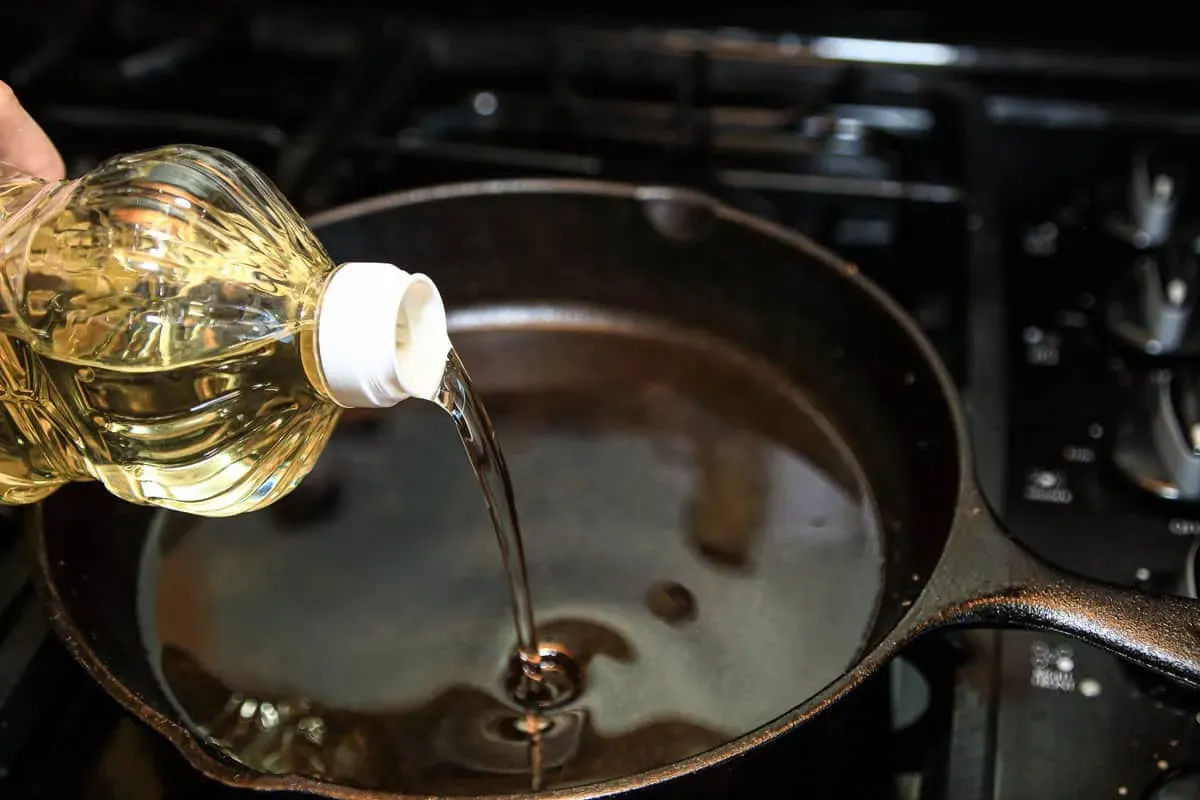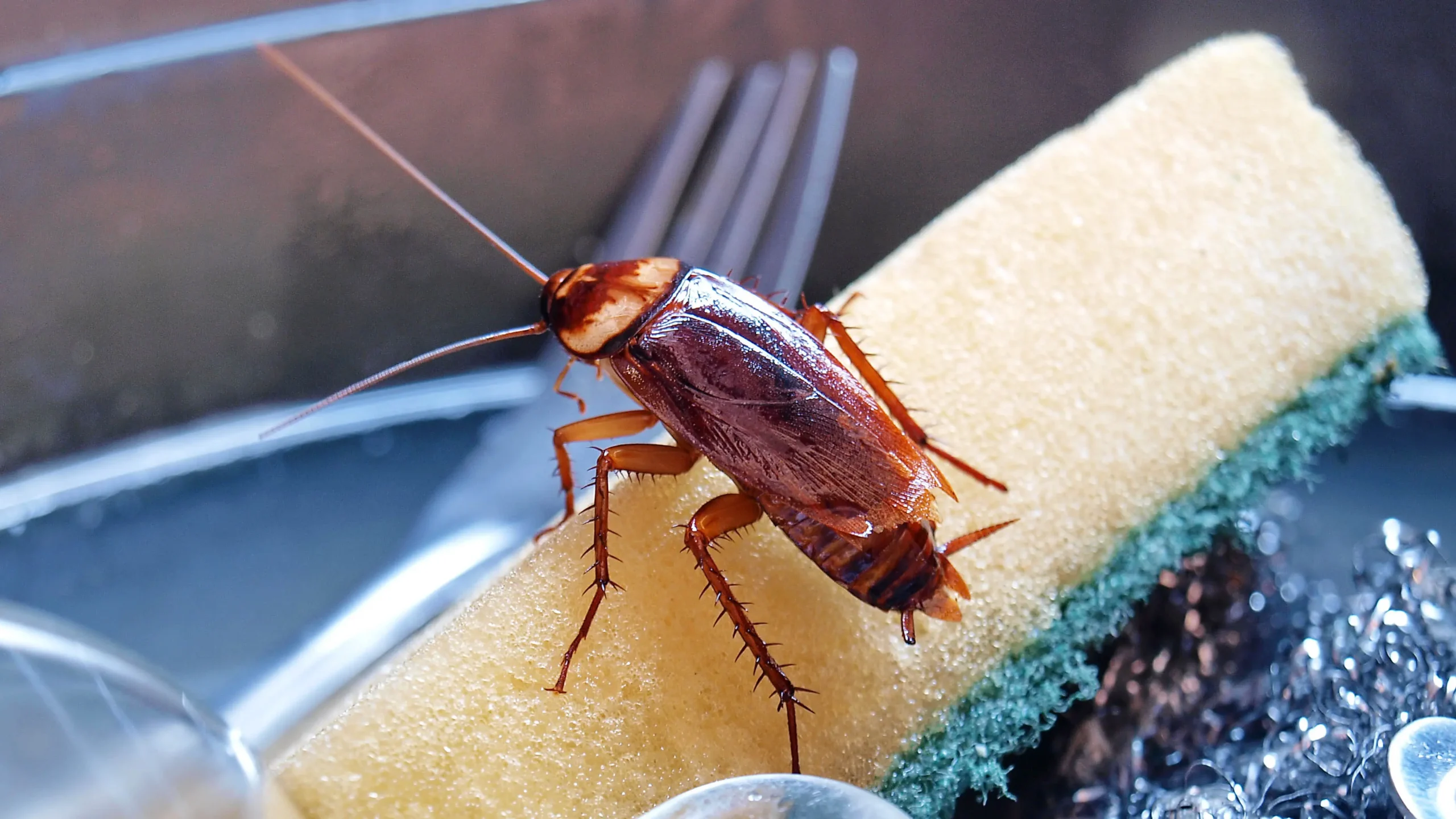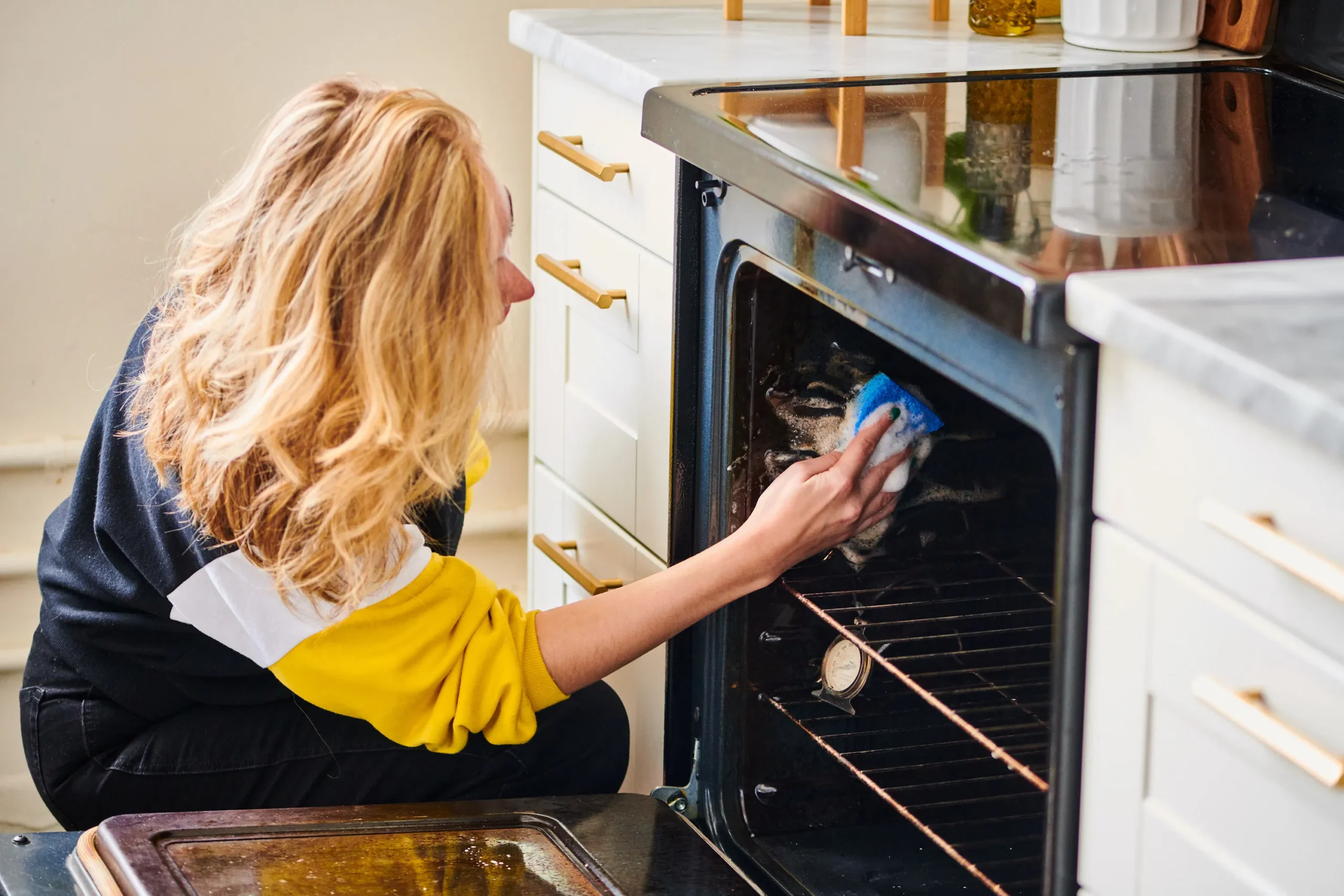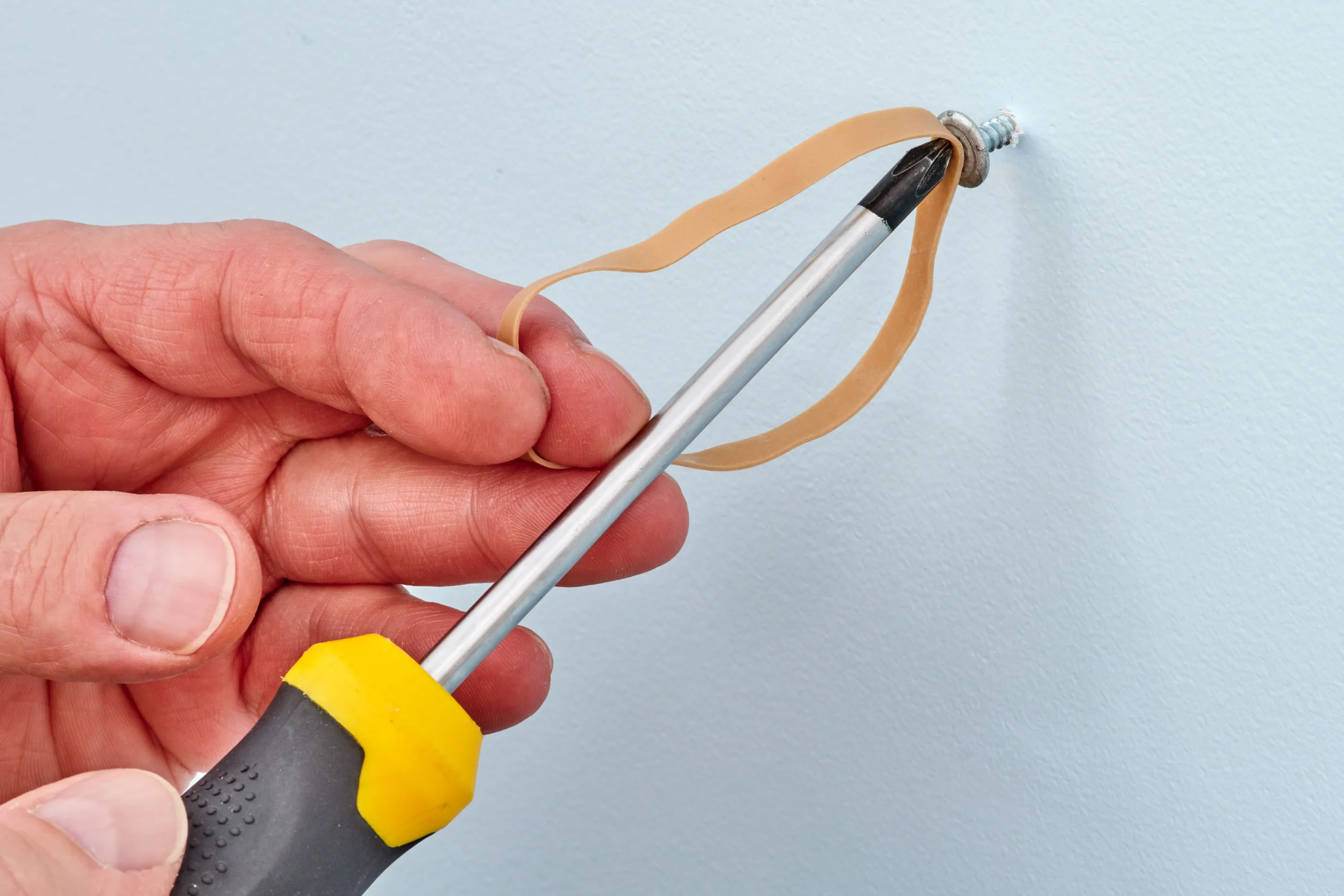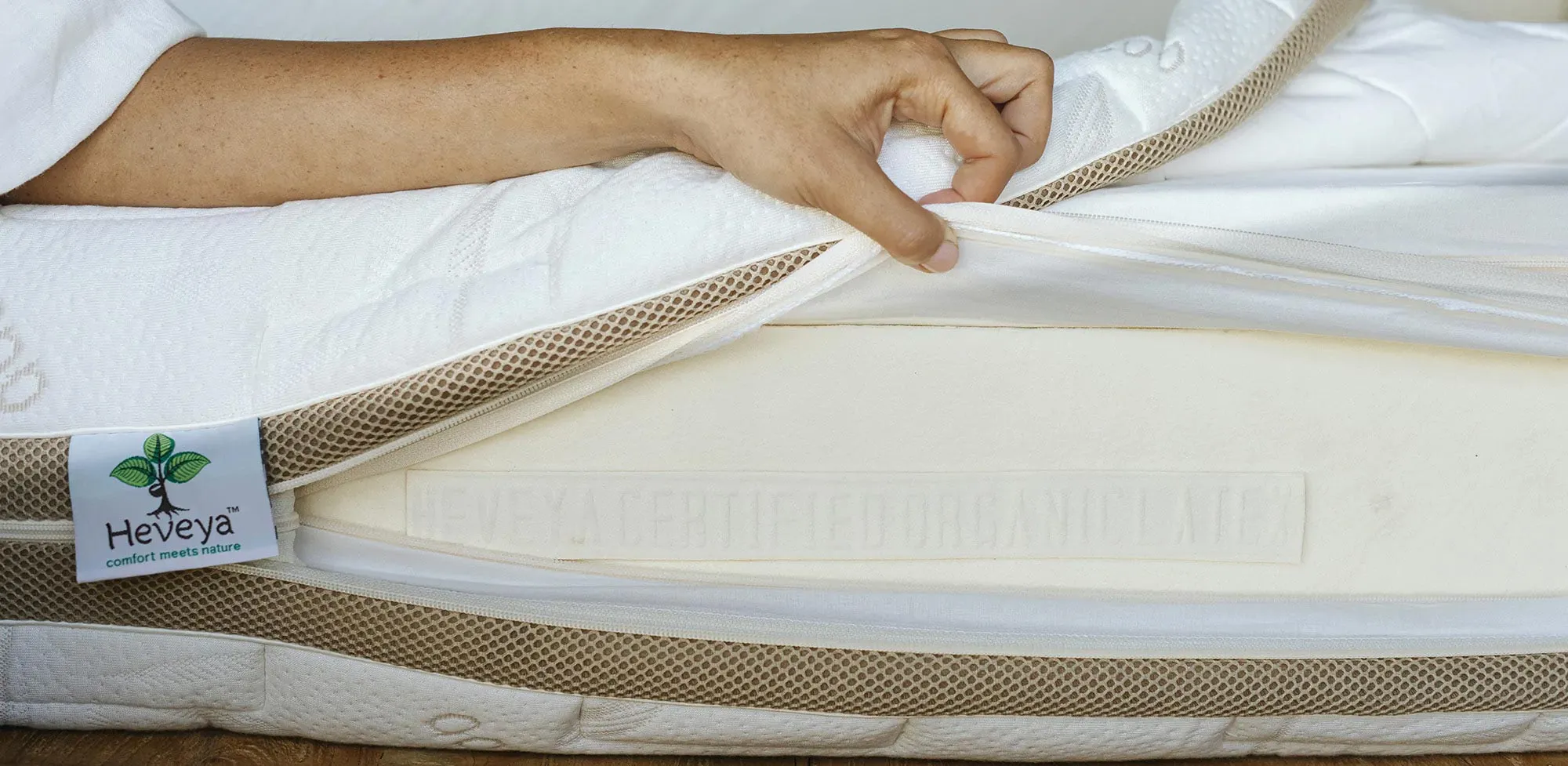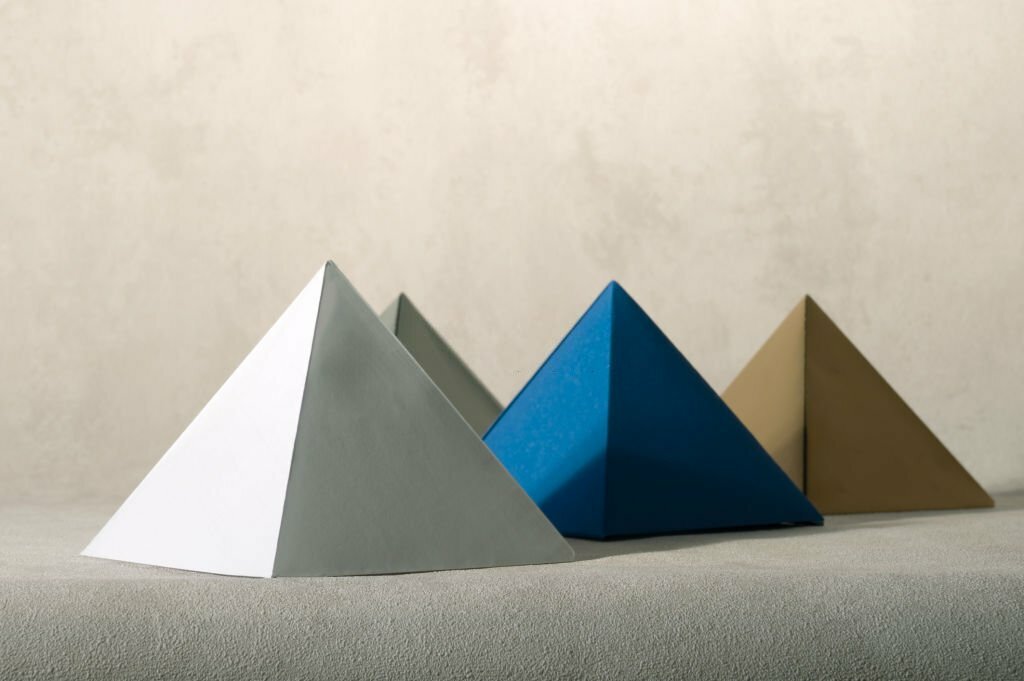Though they are tough kitchen appliances, cast-iron skillets work best when given the right maintenance. So read below on how to season a cast iron skillet correctly.
You can use a cast-iron skillet (also known as a Dutch oven, griddle pan, or skillet) for the rest of your life if you know how to season it and maintain its patina.
It will be helpful to comprehend some of the science behind seasoning, though, before you start scrubbing down your grandmother’s hand-me-downs.
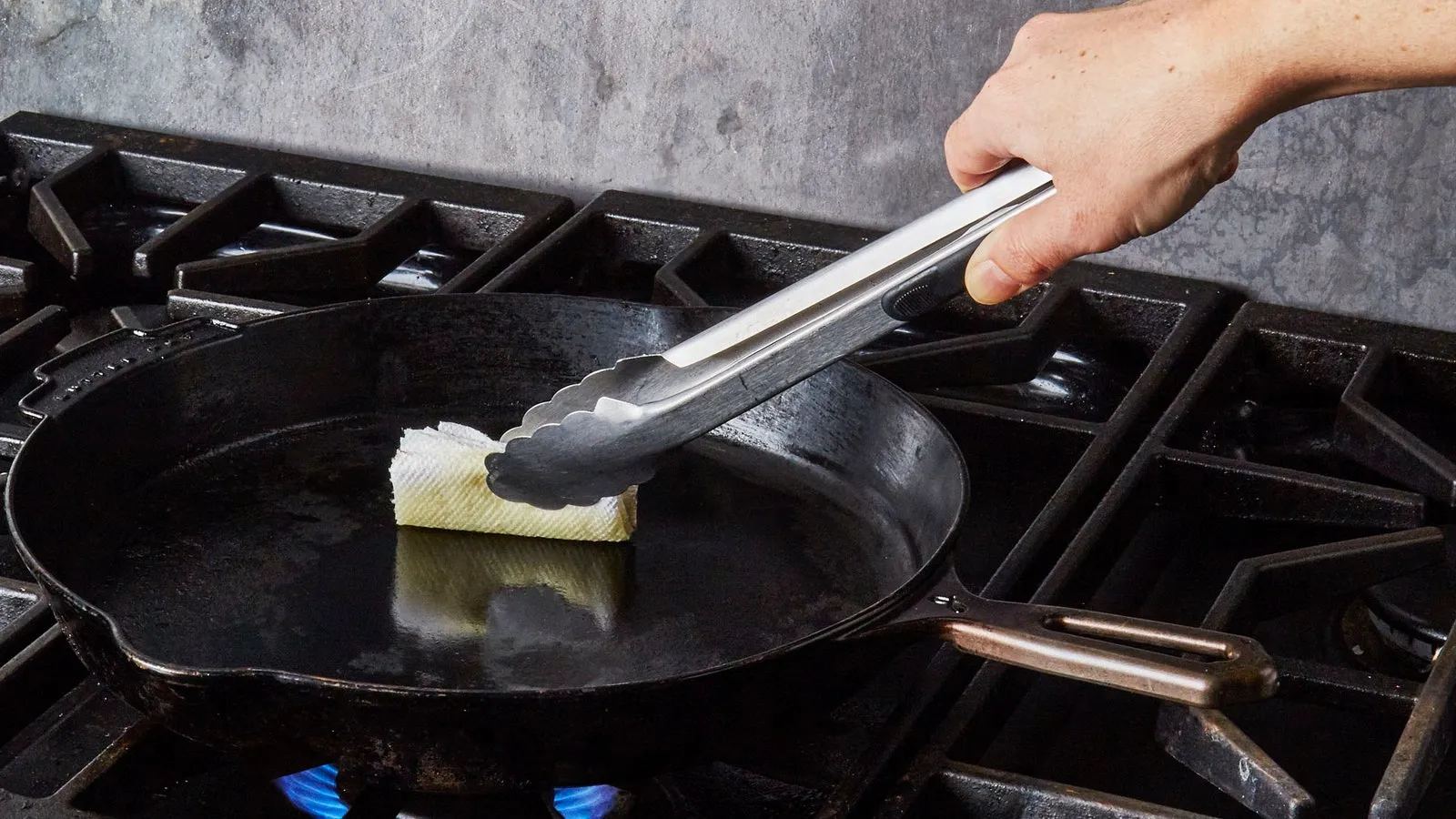
In non-enameled cast iron, fat molecules form a hard surface by bonding with the pan when heated to high temperatures. We refer to this process as polymerization.
How to Season a Cast Iron Skillet Perfectly
Follow the process below to season a cast iron skillet perfectly;
1. Rub the Pan with a Thin Film of Neutral Oil

First, coat the entire pan—including the handle and bottom—with a neutral oil, such as canola or vegetable oil using a paper towel.
Remove any extra oil so that it only coats the metal and doesn’t appear to be pooling. When touched, the pan should feel almost completely dry. If you use too much, your pan will get sticky.
2. Bake the Pan for 1 Hour
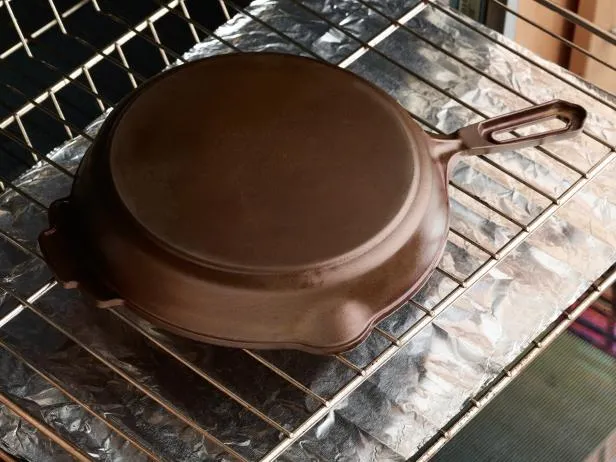
For one hour, bake the dish upside down at 350 degrees Fahrenheit, covering the lower rack with foil to prevent any oil drips. This will shield the surface and make it practically nonstick.
Some people recommend heating the pan on the stove as an additional seasoning technique. However, we believe that using this technique results in hot and cold areas, which leads to uneven seasoning. For more consistent results, use the oven.
3. Cool the Pan In the Oven
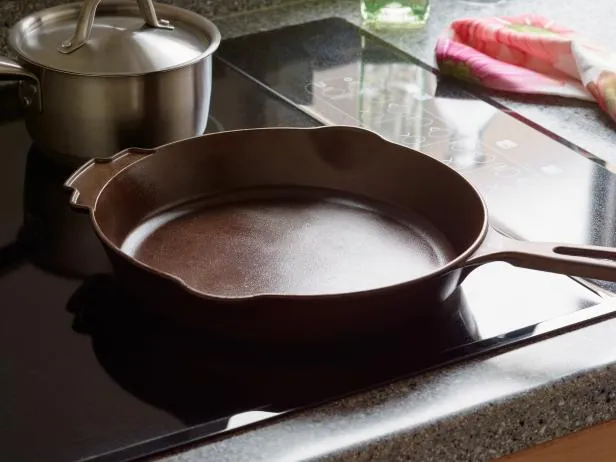
Before touching, turn off the oven and allow the pan to cool inside.
4. Repeat These Steps for an Unseasoned or Stripped Pan
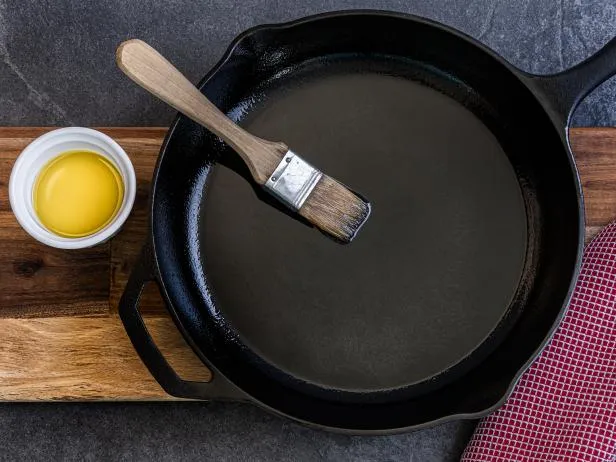
If you’re just getting started with seasoning, you’ll want to go through these steps more than once to ensure a smooth finish.
It will become sticky if you just slather on a lot of oil, so resist the urge. Rich seasoning is composed of numerous thin layers.
Benefits of Cooking With Cast Iron
Cast iron becomes non-stick over time because it is seasoned with a tiny bit of oil that bonds to the metal.
By doing this, you can cook food with less oil than you would in a skillet made of stainless steel.
Because of its capacity to hold heat, it works well for frying chicken and other foods. Cooking with non-stick cookware can be unhealthy due to the chemical coating on the pan and potential scratches.
Although they are ideal in certain circumstances, try to use them sparingly. Cast iron cooking keeps those extraneous ingredients out.
Cast iron cooking is a great way to boost iron levels in food, especially for individuals who may be anemic.
For vegetarians who typically don’t get as much natural iron from their diet, this is fantastic. Cookware made of cast iron is incredibly adaptable and simple to transfer from stovetop to oven.
How to Maintain a Cast-Iron Skillet
These upkeep suggestions will prolong the nonstick and rust-free nature of your cast-iron skillet. Using a cast-iron pan regularly is the best way to keep it seasoned.
According to Stubblefield, “oil forms a layer of seasoning when it is heated in cast iron because of a process called polymerization, which bonds the oil with the metal.”
When you first get your skillet, cook fat-containing foods (bacon, eggs, etc.) in it to help intensify the seasoning.
Cast iron should not be used to cook acidic foods since this will erode the seasoning. Make sure your cast iron is completely dry after cleaning it. By doing this, the pan is shielded from rust accumulation.
Cleaning a cast-iron pan only takes a few minutes at most. Additionally, you don’t have to thoroughly clean your pan after each use.
For example, all you’ll probably need to clean it is a rag dipped in warm water if all you’ve done is fry an egg or reheat some chick breast.
